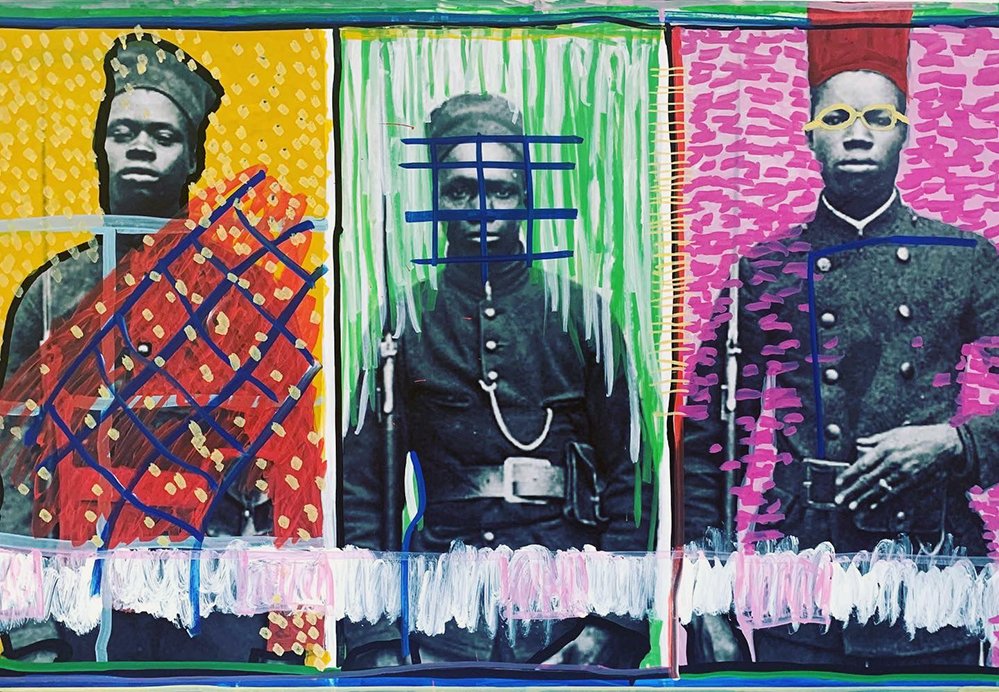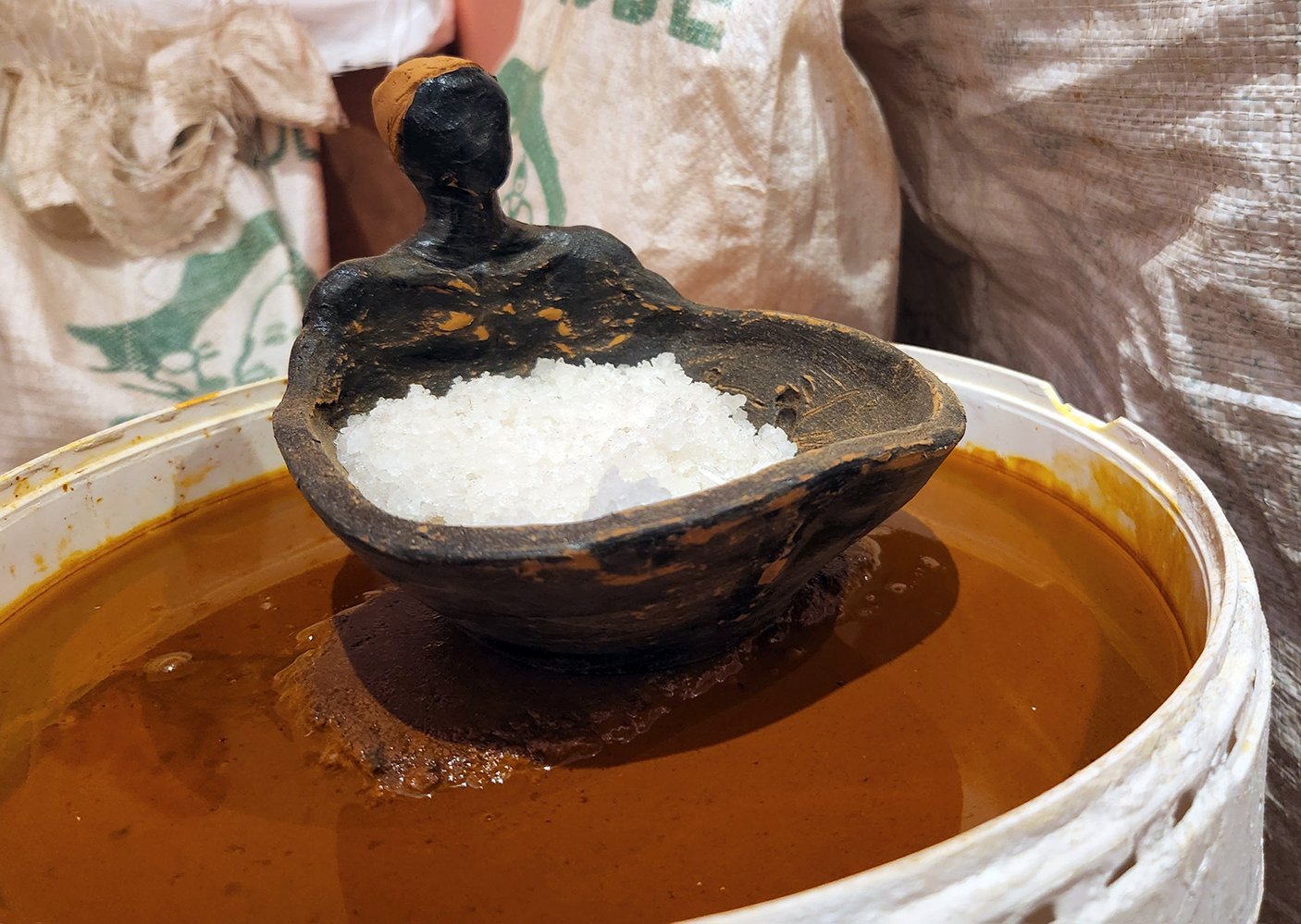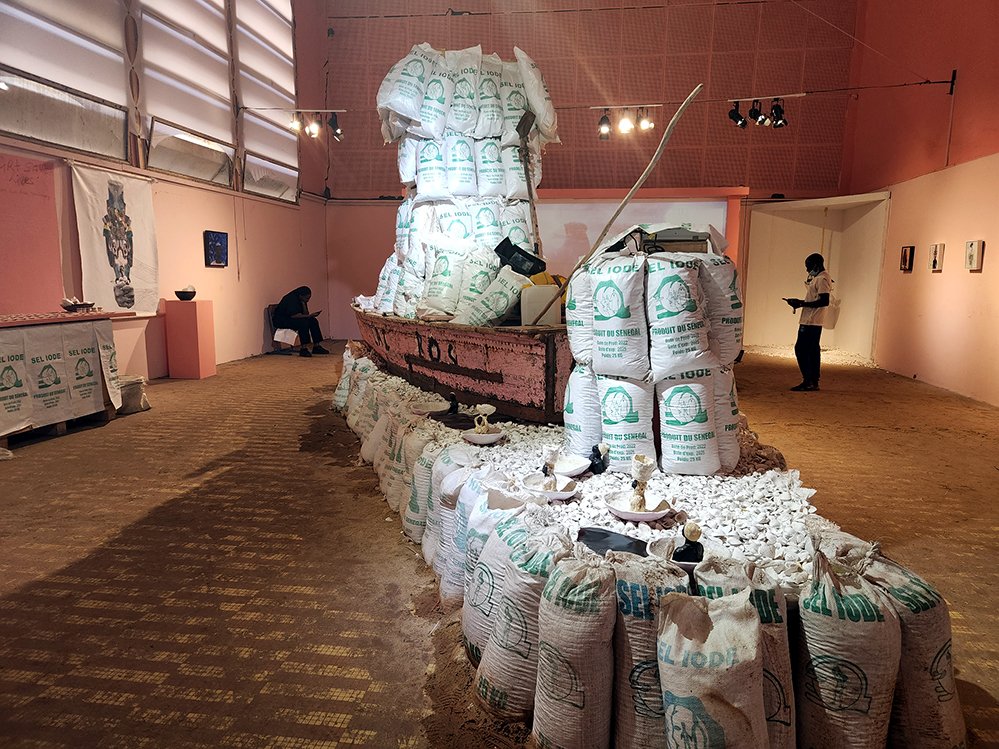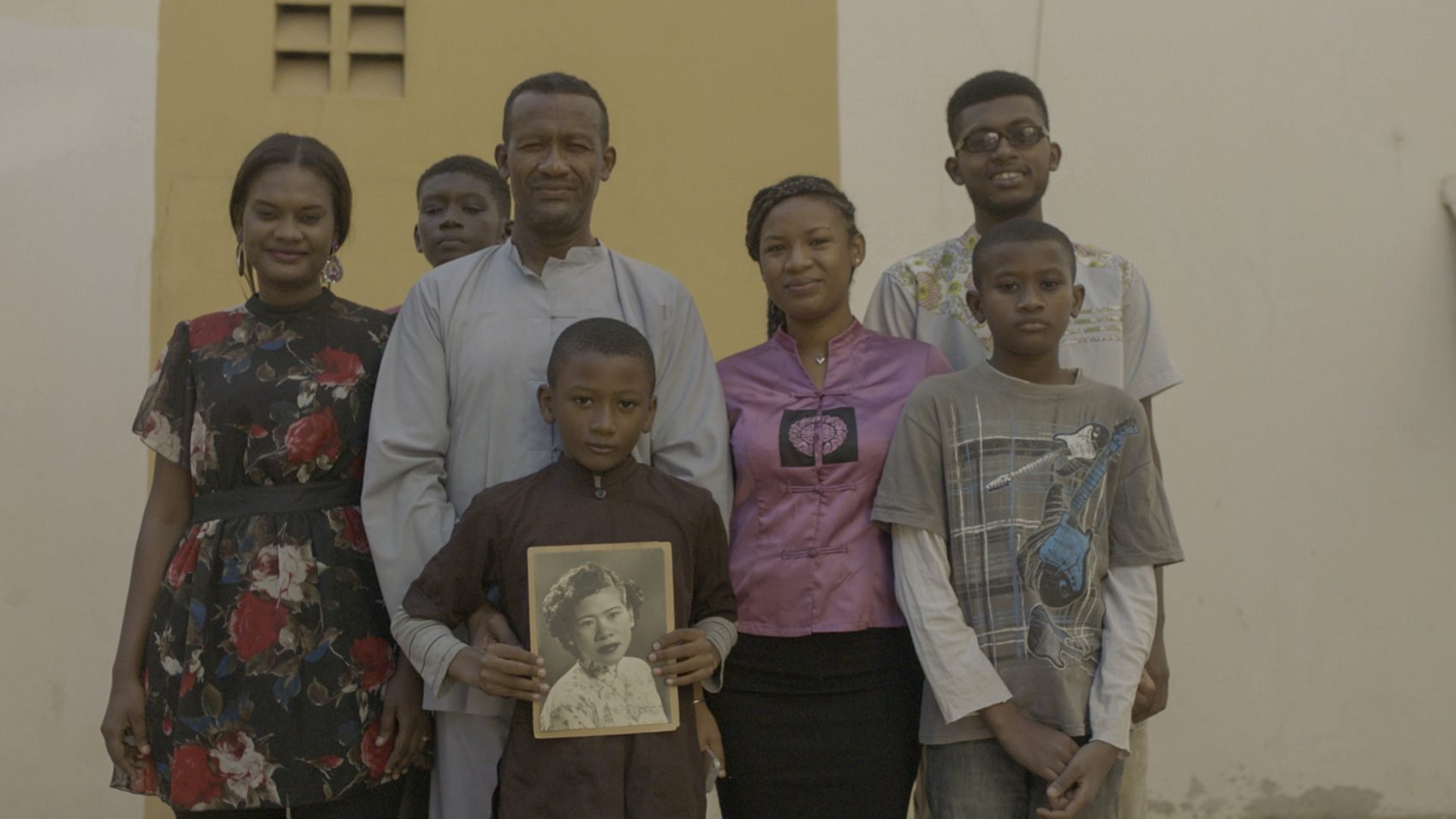FOCUS: Dak’Art Biennale 2022
by Mack McFarland, July 2022
Ana Silva
In the second half of 2021, the global arts community witnessed the reemergence of the pilgrimage to events such as Miami Basel, Prospect New Orleans, and the Venice Biennale. The latest of these, the fourteenth edition of the Biennale of Contemporary African Art in Dakar (Dakar Biennale), hosted it’s opening ceremony on the morning of May 19th, 2022 to a large audience packed into the Grand Théâtre National. Speakers included Senegalese President Macky Sall, in office since 2012, and whose presence acts as an indicator of the importance of this contemporary art project for West Africa, the continent and beyond.
Titled, Ĩ NDAFFA, a transformation of a Serer language word, the phrase indicates drawing forth from the fire of the forge. Its spelling and use are layered with metaphors, which an unnamed author at Contemporary And was kind enough to unpack. Though it's hard not to consider every theme within the context of COVID 19, Ĩ NDAFFA was chosen prior to the pandemic for what would have been a May 2020 opening.
The Dakar Biennale Artistic Director Dr. El Hadji Malick Ndiaye, with co-curators Anna Karima Wana and Delphine Buysse, selected fifty-nine artists from twenty-eight countries to exhibit work in the official exhibitions taking place in eight venues. There were also another nearly 400 exhibitions scattered across Dakar’s vast metro area, surrounding cities, and as far as the northwestern coastal city of Saint Louis in the biennale’s collateral programming, titled LE OFF.
Modou Dieng Yacine
Several of the officially selected artists were also showing work outside of the main exhibition space, which was the case for the Chicago-based artist, curator, and Worksound co-founder Modou Dieng Yacine. Within his room at the main group exhibition in the Ancien palais de Justice, Dieng Yacine’s attention to detail stood out, as in addition to displaying three mixed media works on dusty sky blue walls, reminiscent of the city’s desert sky, he treated the door frames of his gallery as he would the edges of his paintings; black and blue checkered patterns on the sides, with peach and lime colors accenting the top and inner molding.
The works at the Ancien palais de Justice are a part of the same series Dieng Yacine was showing at the rovering gallery Guelen, who took up residence at Espace Valy Sakhir, in a beautifully designed indoor/outdoor room above the peninsula city's winding coastline. The exhibition titled Abstract Emotions consists of a suite of paintings and collage overtop of archival prints. The images are from various archives depicting formal portraits and causal moments of the Senegalese Tirailleurs, colonial infantrymen recruited or in many cases forced to fight for the French Empire between 1857 - 1964 within colonel wars in Africa and Indochina (present day Cambodia, Laos, and Vietnam), as well the two World Wars. Employing his signature color palette inspired by the Sub-Saharan desert and the architecture of Senegal along with his mixture of urgently made and carefully laid marks, both of which he layers up to an intense optical pattern that break where the black and white photographs peer through. The treatment of these men vary, at times reverent, with glowing auroras, and with others Dieng Yacine paints glasses on their faces or obscures them entirely. These moves mirror our conflicted relationship to soldiers in times of peace and war and perhaps more so during our reflections of them in the unfolding and refolding of historical narratives found in these repositories. Dieng Yacine is not making these figures into pop icons entirely, but cautionary tales within the interplay of archival images and the language of shape, color, and line that reminds, honors, and warns.
Yrneh Gabon Brown
Yrneh Gabon Brown
This was not the only artwork alerting us to hubris and the old ways. A vast installation titled Asalted Intermission from the Jamaican born artist who is now a Los Angeles resident Yrneh Gabon Brown, brought together several years of research and many artworks detailing the environmental and more pointedly, the human costs of salt mining in Lake Retba, or its tourist attraction name, Lac Rose (Pink Lake). Lac Rose is so named for its bright pink color, the result of its high salt content, the only lake of its kind in all of Africa. The heart of this installation; of over 50 works of video, painting, sculpture, drawing, and mixed media; are depictions of the women and men who in chest deep water, utilizing shea butter to protect their skin, dig and carry hundreds of pounds of salt to shore daily. They appear in striking ceramic sculptures of heads, torsors, and arms emerging from buckets of rust colored Lac Rose water and from the central installation, a 15’ long work lined with branded bags of salt that creates a container for thousands of white seashells to rest, that support several of the ceramic figures, as well as a worn pink rowboat used at Lac Rose. Seashell mining was big business at Lake Retba for many years, but was stopped in favor of aggressive salt mining.
Yrneh Gabon Brown
Over several years and trips to Lac Rose starting in 2017 Gabon Brown engaged with the miners to get to know the process and their lives. In another work, he rebands the salt bags, replacing the company logo with black white portraits of the miners at work. In several tourist guide books you can read about Lac Rose and its buoyant waters to explore and if the workers are mentioned at all it’s done in the quaintest way possible. Gabon Brown brings these miners to the foreground. This refocusing or making the invisible visible has been at the crux of his work for many years. To ensure visitors feel welcome and can connect to the work, he has hired his own docent, Isabell, who speaks at least four languages and was busy everytime I came chatting with the audience. For this project Gabon Brown is endeavoring to do more than shine a light, he is actively working to provide things the miners are seeking, namely medical care. Part of the project's funding and all of its sales will go towards the founding of a health clinic for the workers at Lac Rose.
Image Courtesy of Tuan Andrew Nguyen
There are so many stand out projects I was able to encounter that I cannot list them all here, however a few to note:
An exhibition titled unsettled at Musée IFAN with works from Bronwyn Katz, Nashilongweshipwe Mushaandja, Nolan Oswald Dennis and Zayaan Khan, curated by Greer Valley which brought together these artists whom are all delving into the trauma and future possibilities of postcolonial land and archives that, “...reflects on past and present counter-acts of resistance, care, and healing in response to enforced alienation and dislocation, or what Christina Sharpe calls "settler atmospherics." This exhibition also include an insightful day of conversations organized by Black Planetary Futures Institute on “unsettling blk curatorial practice” and “unsettling (an) embodied archive”
Tuan Andrew Nguyen’s, (member of the The Propeller Group) The Specter of Ancestors Becoming, at RAW Material Company was a wonderful inclusion into the overall biennial. This 2019 four-channel video also deals with the legacy of the Senegalese Tirailleurs, with a focus on the hundreds of migrating Vietnamese women who married and often bore children to these soldiers while serving in Indochina. The video and accompanying installation made up of family photos from this community was moving and enlightening.
One last one, back at the Ancien palais de Justice, a striking work from Ana Silva, an Angolan artist living in Portugal who created a 20’ long installation titled Legado (Tributo) made up of her figurative embroiders on to scraps of traps and other found material that depict her memories, some mundane such a scenes from the market, other tragic like the Angolan war for independence and civil war.
Mack McFarland is an artist, curator, and educator. For the last twenty years, it has been his privilege to collaborate with many cultural producers in the process of bringing to life the shared cultural experiences that are so vital for sustaining and creating communities, while aiding us in grappling with and discerning meaning from the events of our world.
As an artist he has shared his postcards, videos, and performances at many venues and festivals. As a curator he has been fortunate to work with several artists, including commissioned projects from tactical media practitioners Critical Art Ensemble, Eva and Franco Mattes, and Disorientalism; as well as solo exhibitions with Justseeds Artists’ Cooperative, Joe Feddersen, David Horvitz, Joe Sacco, Cauleen Smith, and many others. In May 2020 he co-founded Congress Yard Projects with Ariana Jacob, an outdoor exhibition space begun in the time of physical distancing.






